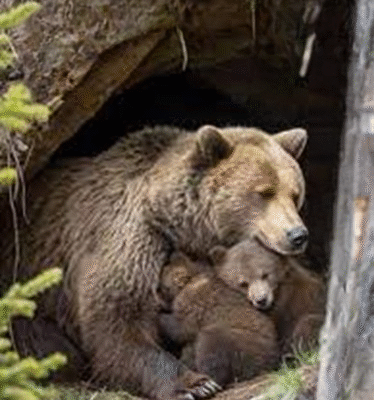When the Flames Rose, Love Stood Taller: The Story That Moved a Nationon When the Flames Rose, Love Stood Taller: The Story That Moved a Nation
A City on Fire
The afternoon sun over Los Angeles had turned from gold to a dull, angry red. It was supposed to be a typical dry season day, but the winds were merciless, racing down the hills and turning a small spark into a furious wall of fire. Within hours, neighborhoods were shrouded in haze, the scent of burning brush and smoke filling every breath.
From the mountains to the outskirts of the valley, entire families packed what they could carry and fled. The emergency alerts buzzed nonstop, and the sky looked like a sunset that refused to fade.
Among those watching from the sidelines were hundreds of first responders—firefighters, paramedics, and police officers—each carrying the heavy responsibility of saving lives while knowing that nature’s fury was far from over.
Officer Daniel Ruiz, a veteran of the LAPD, was among them. His patrol route stretched along a partially evacuated area near the San Gabriel foothills, where the fire had eaten through fields and forests. He had seen disasters before, but that day, something unforgettable awaited him.
A Sudden Sound in the Silence
The roar of flames had softened by the time Ruiz arrived at the edge of the zone. Wind pushed a curtain of gray ash across the road, and fallen branches crackled beneath his boots. He moved carefully, keeping an eye on the hills. Everything was eerily still.
Then—a crash.
It wasn’t loud, but in the silence, it was enough to make him stop. His first thought was that someone had ignored the evacuation order, maybe trapped or trying to protect property. He followed the noise down a side road, his flashlight cutting through smoke that hung thick like fog.
That’s when he saw it—a car, burned around the edges, abandoned at first glance. Its windows were black with soot, its tires half-melted into the pavement. But inside was a shape that made him pause.
A Scene of Unimaginable Devotion
There, in the driver’s seat, sat a mother bear.
Her fur was scorched, her breathing uneven. Curled against her body was a smaller shape—her cub. The animal’s tiny frame lay still, its coat gray with ash. The officer’s instincts told him to step back, but something about her posture froze him in place.
She wasn’t aggressive. She wasn’t afraid.
She was grieving.
Her head rested low, eyes glazed yet alert, watching him with an expression that seemed almost human—filled with exhaustion, pain, and an unspoken plea. The world around them had burned, yet here she remained, refusing to leave her child.
Ruiz radioed for wildlife rescue support, his voice heavy. “We’ve got an animal survivor… looks injured. She’s not moving. She’s guarding something.”
What he didn’t say was what he already knew—the cub was gone.
A Mother’s Silent Watch
Hours passed before the wildlife rescue team could reach the area. The flames had moved elsewhere, but the ground was still hot, and visibility was poor. When the rescuers arrived, they approached slowly, whispering directions and moving with careful respect. The bear didn’t growl, didn’t charge—she simply stayed still, one paw draped protectively over her cub.
“She’s mourning,” whispered one of the biologists. “They do this sometimes—stay with their young for hours, even days.”
But this wasn’t just instinct. Every small movement she made, every breath drawn through burned fur and smoke, was deliberate—an act of love, not survival.
She had dragged her cub through fire, across scorched earth, to the nearest place of shelter she could find—a car, once belonging to a family who had evacuated hours earlier. She must have thought it would protect them from the flames. It hadn’t.
And yet she stayed.
Rescue in Reverence
It took nearly two hours to coax her out. Each time someone moved closer, she raised her head, watching intently to make sure her baby wasn’t touched carelessly. The team used calm voices, moving with the patience reserved for moments that demand reverence. Finally, when a rescuer gently wrapped the cub in a blanket, the mother stepped forward, sniffing, as if to ensure they meant no harm.
“She followed us,” said firefighter Andrea Lee, who was part of the team that day. “Slowly, quietly, like she was making sure we wouldn’t leave her child behind. I’ve never seen anything like it.”
They led her to an animal care transport, placing both mother and cub inside. When the door shut, the rescuers stepped back, their faces streaked not just with soot, but with tears.
“It broke all of us,” Lee said later. “It reminded us why we do what we do—not just for humans, but for all living things that suffer when nature turns violent.”
Beyond Instinct: The Science of Grief in the Wild
Biologists have long debated whether animals truly experience grief as humans do. But stories like this have begun to reshape that understanding. Bears, elephants, dolphins, and even some birds have been observed staying near their deceased young—sometimes for hours, sometimes for days.
Dr. Helena Grant, a wildlife behavior specialist at UC Davis, explained:
“Grief in animals may not mirror human grief exactly, but it’s deeply emotional and social. What we see is not just attachment—it’s mourning, expressed through stillness, vocalizations, or protective gestures.”
She continued, “What that bear did wasn’t simply instinct. It was an emotional act that shows recognition of loss. It’s the clearest reminder that compassion exists in the natural world.”
When Nature Burns, Humanity Learns
The story quickly spread through the local rescue community. Within days, a photo of the moment—captured from a distance by a firefighter—circulated online. It showed the bear sitting by the burned car, framed by smoke and ash, her cub at her feet. People from around the world shared it with captions like “A mother’s love knows no species.”
Environmental groups began using the image as a symbol of what wildfires take—not only homes and landscapes but the countless creatures that live unseen among us. It became a rallying cry for awareness, inspiring fundraising campaigns to rebuild wildlife habitats and rehabilitate injured animals.
Officer Ruiz, who had witnessed it first, refused to call himself a hero. “I didn’t save anyone that day,” he said quietly. “But I learned what real courage looks like. That bear—she taught me more about love than any human story ever could.”
The Fire After the Flames
Weeks after the fires were contained, crews returned to clear debris. Charred cars were towed away, fences rebuilt, and hillsides sprayed with seed to prevent erosion. Amid the recovery, wildlife officers confirmed that the mother bear had survived. After being treated for minor burns and dehydration, she was released back into the wild—this time in a protected sanctuary farther north.
“She didn’t run when we opened the gate,” one rescuer recalled. “She stood there for a minute, sniffed the air, and looked back—almost as if she knew we were watching. Then she walked into the trees.”
Her cub was laid to rest nearby, under a pine tree that had somehow escaped the flames. A small wooden sign marked the spot. It read, ‘Forever Safe.’
Lessons Written in Ash
It’s easy to see wildfires as statistics—acres burned, homes lost, containment percentages. But behind those numbers are countless stories that remind us of the fragile balance we share with nature. The bear’s story wasn’t about tragedy; it was about connection, about how love endures even in destruction.
Scientists, firefighters, and volunteers who witnessed the scene still talk about it in quiet tones. For them, it’s a reminder that resilience isn’t only human.
It exists in every living thing that refuses to give up, that carries love even through smoke and ruin.
Hope Beyond the Heat
In the aftermath, community programs sprang up across California to educate residents on coexistence with wildlife, fire prevention, and compassion for displaced animals. Schools began teaching students about the impact of climate change, using the mother bear’s story as a real-life example of empathy and environmental responsibility.
One mural now stands in a small Los Angeles park—a painting of a bear holding her cub amid gentle flames that fade into flowers. Beneath it, a quote reads:
“Love is the last thing to burn.”
Every visitor who sees it is reminded that while fire can consume, it can never erase love or the lessons it leaves behind.
A Symbol That Endures
Years from now, when people remember the great Los Angeles wildfires of 2025, statistics may fade. But the image of that bear—the one who stayed behind when every instinct told her to run—will remain etched in memory.
She became more than an animal story.
She became a symbol of what it means to love without conditions, to hold on even when the world collapses around you.
In every fire zone, in every rescue, in every mother who refuses to give up, her spirit lingers—a quiet reminder that love, in its purest form, is the greatest force of all.



